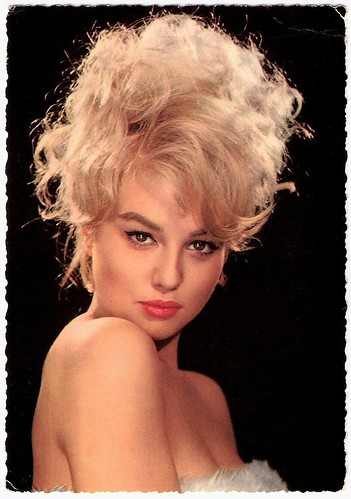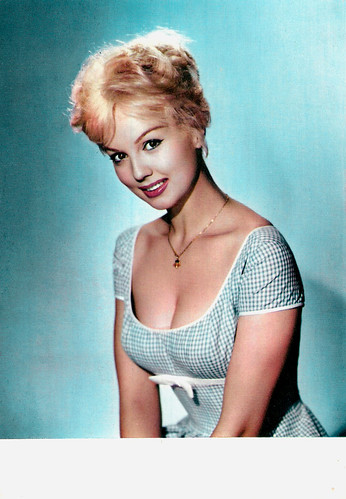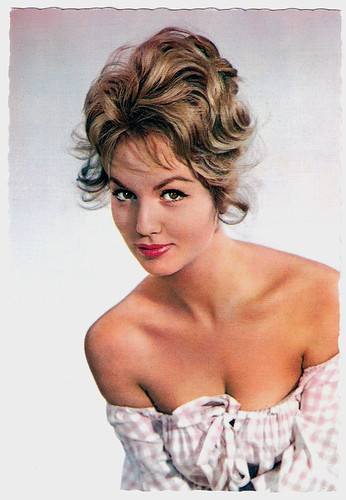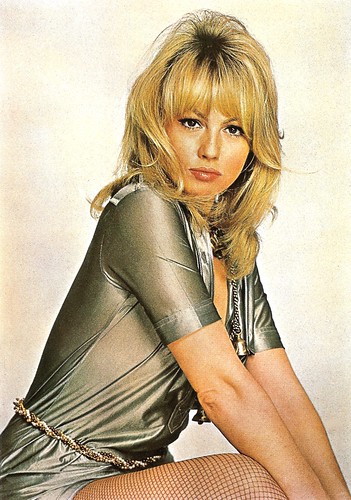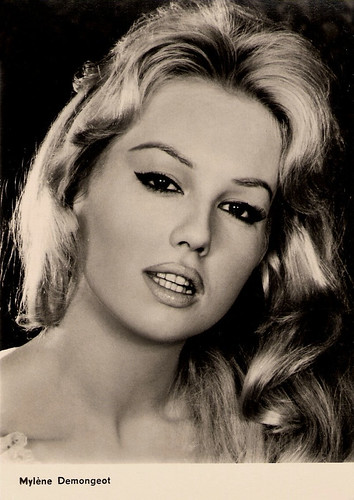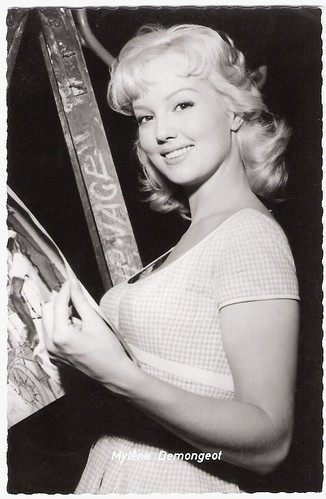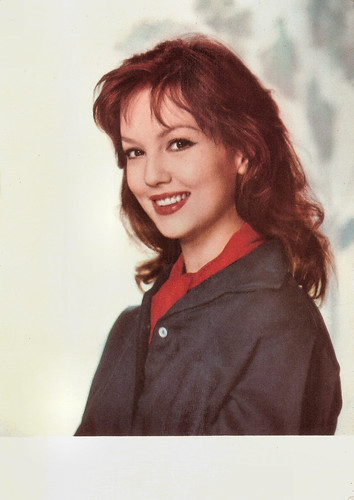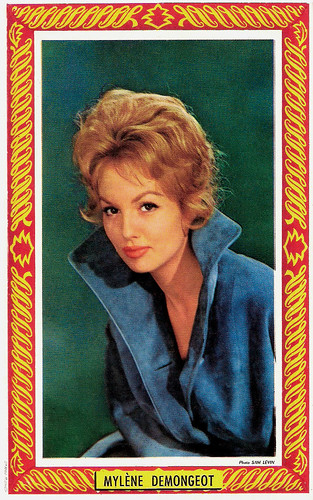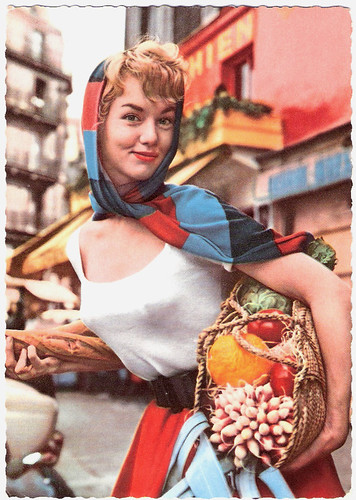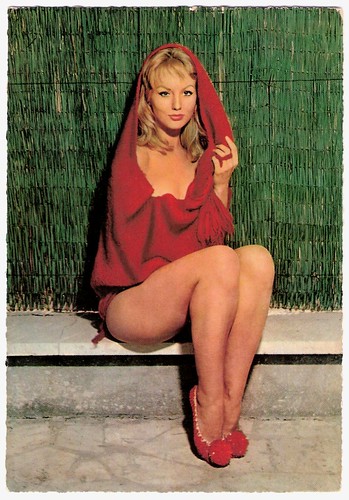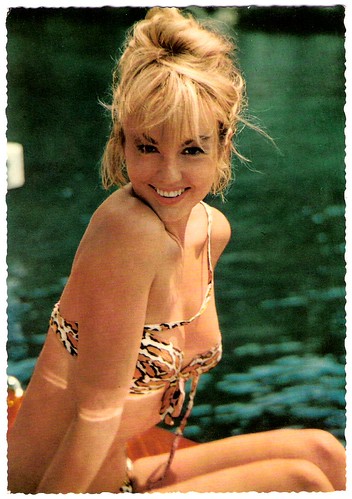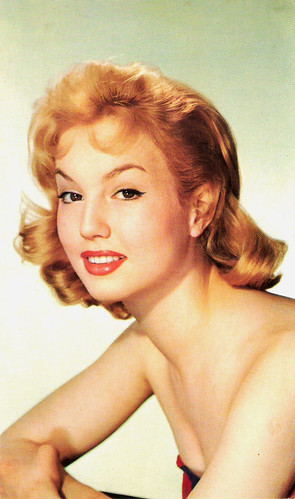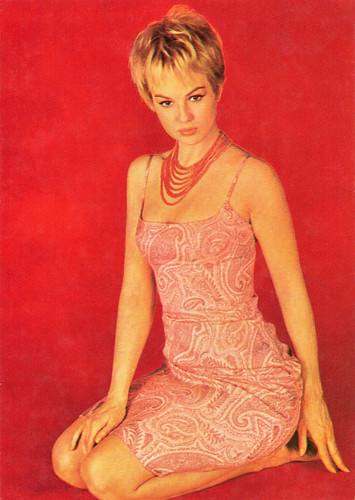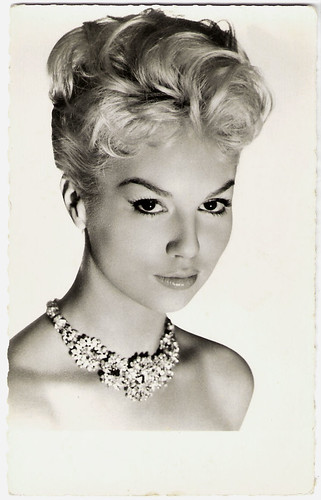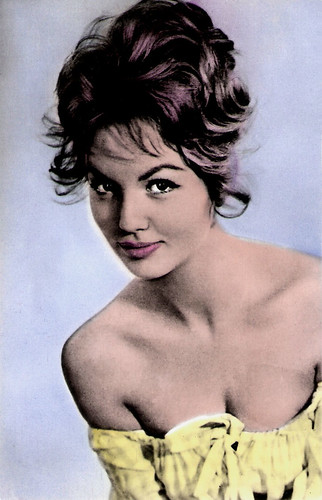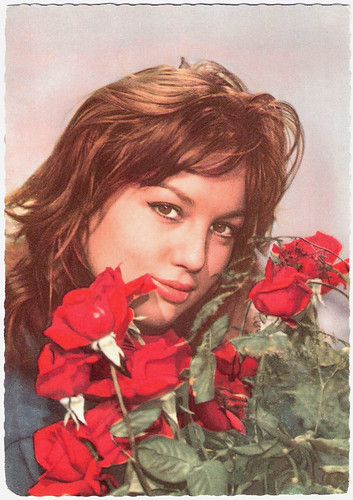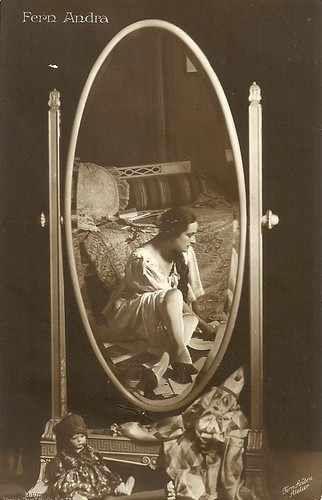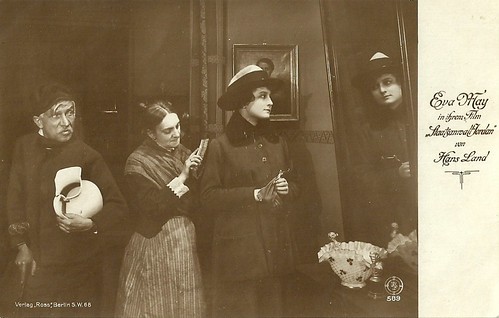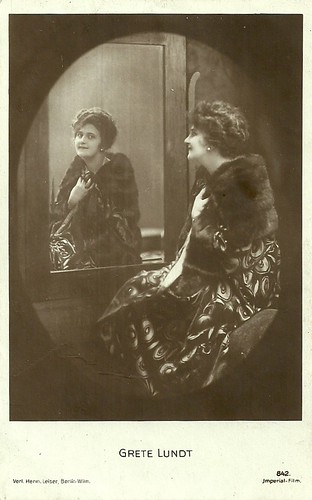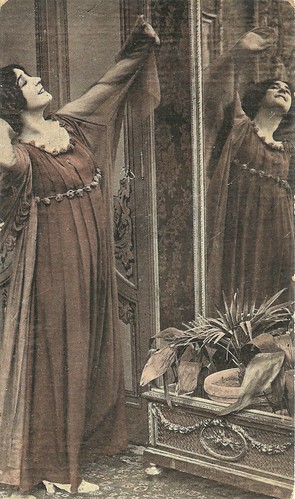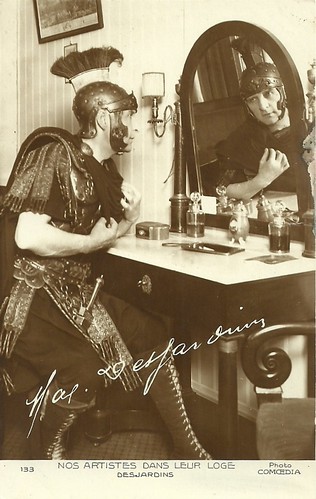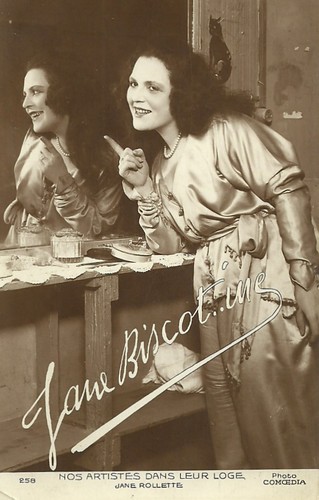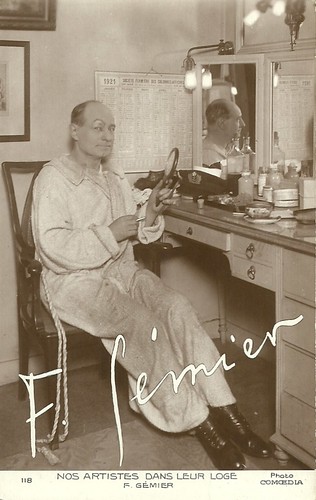Luis Mariano (1914-1970) was a popular tenor of Spanish Basque origin, and was also a popular film star in the 1940s and 1950s. He reached celebrity in 1946 with the operetta La belle de Cadix. For more than ten years he dominated the French chanson and operetta world.
![Luis Mariano]()
French postcard by Editions du Globe, Paris, no. 213. Photo: Studio Harcourt.
![Luis Mariano]()
French postcard by Editions P.I., Paris, no. 38. Photo: Discina.
![Luis Mariano]()
French postcard by Editions P.I., Paris, no. 34. Photo: Films Gloria.
![Luis Mariano]()
French postcard by Editions du Globe, no. 7. Photo: Teddy Piaz, Paris.
![Luis Mariano in Der Zarewitsch (1954)]()
Dutch postcard by Uitg. Takken, Utrecht, no. AX 3143. Photo: Melior. Publicity still for Der Zarewitsch/The Little Czar (Arthur Maria Rabenalt, 1954).
Luis Mariano was born as Mariano Eusebio González y García in Irún, Spain in 1914 as the son of a mechanic. His family moved to France at the start of the Spanish Civil War.
Luis studied at the École des Beaux-arts in Bordeaux. When he wanted to enter the Conservatoire de Bordeaux, his singing talent was discovered by singer Jeannine Micheau. She introduced him to Miguel Fontecha, who taught him further on.
Mariano made his debut at the Palais de Chaillot in 1943, as Ernesto in Don Pasquale. He also sang in variety shows on the radio and became well known. He met Francis Lopez and Raymond Vinci, and sang in their operetta La belle de Cadix/The Beautiful Lady of Cadix, which became his breakthrough. The run of the operetta continued for more than two years.
In 1943 he also made his first film appearances in Le Chant de l'exilé/The Song of the Exile (André Hugon, 1943) starring Tino Rossi, and L'escalier sans fin/The Stairs Without an End (Georges Lacombe, 1943) with Pierre Fresnay.
![Luis Mariano]()
French postcard, no. 252. Photo: 20th Century Fox.
![Luis Mariano]()
French postcard by Editions du Globe, Paris, no. 187. Photo: Studio Harcourt.
![Carmen Sevilla and Luis Mariano in Andalousie (1951)]()
Dutch postcard. Photo: 20th Century Fox. Publicity still for Andalousie/Andalucia (Robert Vernay, 1951) with Carmen Sevilla.
![Luis Mariano in Der Zarewitsch (1954)]()
German postcard by Kunst und Bild, Berlin, no. A 1336. Photo: CCC / Gloria / Arthur Grimm. Publicity still for Der Zarewitsch/The Little Czar (Arthur Maria Rabenalt, 1954).
Rapidly, Luis Mariano became popular. For more than ten years he dominated the French chanson and operetta world.
In the cinema he starred with Martine Carol in the comedy Je n'aime que toi/I Like Only You (Pierre Montazel, 1949), and in the Spanish-French musical El Sueño de Andalucía/Andalousie/Andalusia (Luis Lucia, Robert Vernay, 1951).
The highpoint of his career was in the 1951-1952 season, when he was a big success as the ‘Mexican Singer’ in the operetta Le chanteur de Mexico, had a huge hit with the song Mexico, and made the musical film Violetas imperiales/Violettes impériales (Richard Pottier, 1952) with Carmen Sevilla.
In total he made some twenty musical films. The following years he toured through Europe, and North and South America. When the yé-yé (the French beat music) conquered the French radio and TV in 1958-1960, Luis Mariano decided to direct his focus entirely on the operetta.
His last film appearance was a bit part in the comedy Les pieds dans le plâtre/Feet in the plaster (Jacques Fabbri, Pierre Lary, 1965).
Luis Mariano died in 1970 in Paris of cerebral hemorrhage. He was only 55. In 1996 his music was featured prominently in the award winning Belgian film Le Huitième Jour/The Eighth Day (Jaco van Dormael, 1996) in which he is played by Laszlo Harmati during the hallucination scenes.
![Luis Mariano]()
French postcard by JPB. Photo: disques La Voix de son Maitre.
![Luis Mariano]()
French postcard by Editions Rameaux, Ascain, no. 85/391. Photo: Patxi Lacan. Publicity still for the stage operetta Le Secret de Marco Polo/The Secret of Marco Polo (1959).
![Luis Mariano]()
French postcard by Editions Rameaux, Ascain. Photo: Patxi Lacan.
![Luis Mariano and Annie Cordy]()
With Annie Cordy. French promotion card by S.I.A.T., Paris for Pathé. On the backside the text of the song Visa pour l'amour.
Luis Mariano sings Mexico. Source: Zdrobygdo (YouTube).
Sources: Mariano Lacan (Luis Mariano Official Website - French), Wikipedia, and IMDb.

French postcard by Editions du Globe, Paris, no. 213. Photo: Studio Harcourt.

French postcard by Editions P.I., Paris, no. 38. Photo: Discina.

French postcard by Editions P.I., Paris, no. 34. Photo: Films Gloria.

French postcard by Editions du Globe, no. 7. Photo: Teddy Piaz, Paris.

Dutch postcard by Uitg. Takken, Utrecht, no. AX 3143. Photo: Melior. Publicity still for Der Zarewitsch/The Little Czar (Arthur Maria Rabenalt, 1954).
The Beautiful Lady of Cadix
Luis Mariano was born as Mariano Eusebio González y García in Irún, Spain in 1914 as the son of a mechanic. His family moved to France at the start of the Spanish Civil War.
Luis studied at the École des Beaux-arts in Bordeaux. When he wanted to enter the Conservatoire de Bordeaux, his singing talent was discovered by singer Jeannine Micheau. She introduced him to Miguel Fontecha, who taught him further on.
Mariano made his debut at the Palais de Chaillot in 1943, as Ernesto in Don Pasquale. He also sang in variety shows on the radio and became well known. He met Francis Lopez and Raymond Vinci, and sang in their operetta La belle de Cadix/The Beautiful Lady of Cadix, which became his breakthrough. The run of the operetta continued for more than two years.
In 1943 he also made his first film appearances in Le Chant de l'exilé/The Song of the Exile (André Hugon, 1943) starring Tino Rossi, and L'escalier sans fin/The Stairs Without an End (Georges Lacombe, 1943) with Pierre Fresnay.

French postcard, no. 252. Photo: 20th Century Fox.

French postcard by Editions du Globe, Paris, no. 187. Photo: Studio Harcourt.

Dutch postcard. Photo: 20th Century Fox. Publicity still for Andalousie/Andalucia (Robert Vernay, 1951) with Carmen Sevilla.

German postcard by Kunst und Bild, Berlin, no. A 1336. Photo: CCC / Gloria / Arthur Grimm. Publicity still for Der Zarewitsch/The Little Czar (Arthur Maria Rabenalt, 1954).
Mexican Singer
Rapidly, Luis Mariano became popular. For more than ten years he dominated the French chanson and operetta world.
In the cinema he starred with Martine Carol in the comedy Je n'aime que toi/I Like Only You (Pierre Montazel, 1949), and in the Spanish-French musical El Sueño de Andalucía/Andalousie/Andalusia (Luis Lucia, Robert Vernay, 1951).
The highpoint of his career was in the 1951-1952 season, when he was a big success as the ‘Mexican Singer’ in the operetta Le chanteur de Mexico, had a huge hit with the song Mexico, and made the musical film Violetas imperiales/Violettes impériales (Richard Pottier, 1952) with Carmen Sevilla.
In total he made some twenty musical films. The following years he toured through Europe, and North and South America. When the yé-yé (the French beat music) conquered the French radio and TV in 1958-1960, Luis Mariano decided to direct his focus entirely on the operetta.
His last film appearance was a bit part in the comedy Les pieds dans le plâtre/Feet in the plaster (Jacques Fabbri, Pierre Lary, 1965).
Luis Mariano died in 1970 in Paris of cerebral hemorrhage. He was only 55. In 1996 his music was featured prominently in the award winning Belgian film Le Huitième Jour/The Eighth Day (Jaco van Dormael, 1996) in which he is played by Laszlo Harmati during the hallucination scenes.

French postcard by JPB. Photo: disques La Voix de son Maitre.

French postcard by Editions Rameaux, Ascain, no. 85/391. Photo: Patxi Lacan. Publicity still for the stage operetta Le Secret de Marco Polo/The Secret of Marco Polo (1959).

French postcard by Editions Rameaux, Ascain. Photo: Patxi Lacan.

With Annie Cordy. French promotion card by S.I.A.T., Paris for Pathé. On the backside the text of the song Visa pour l'amour.
Luis Mariano sings Mexico. Source: Zdrobygdo (YouTube).
Sources: Mariano Lacan (Luis Mariano Official Website - French), Wikipedia, and IMDb.



















































































































